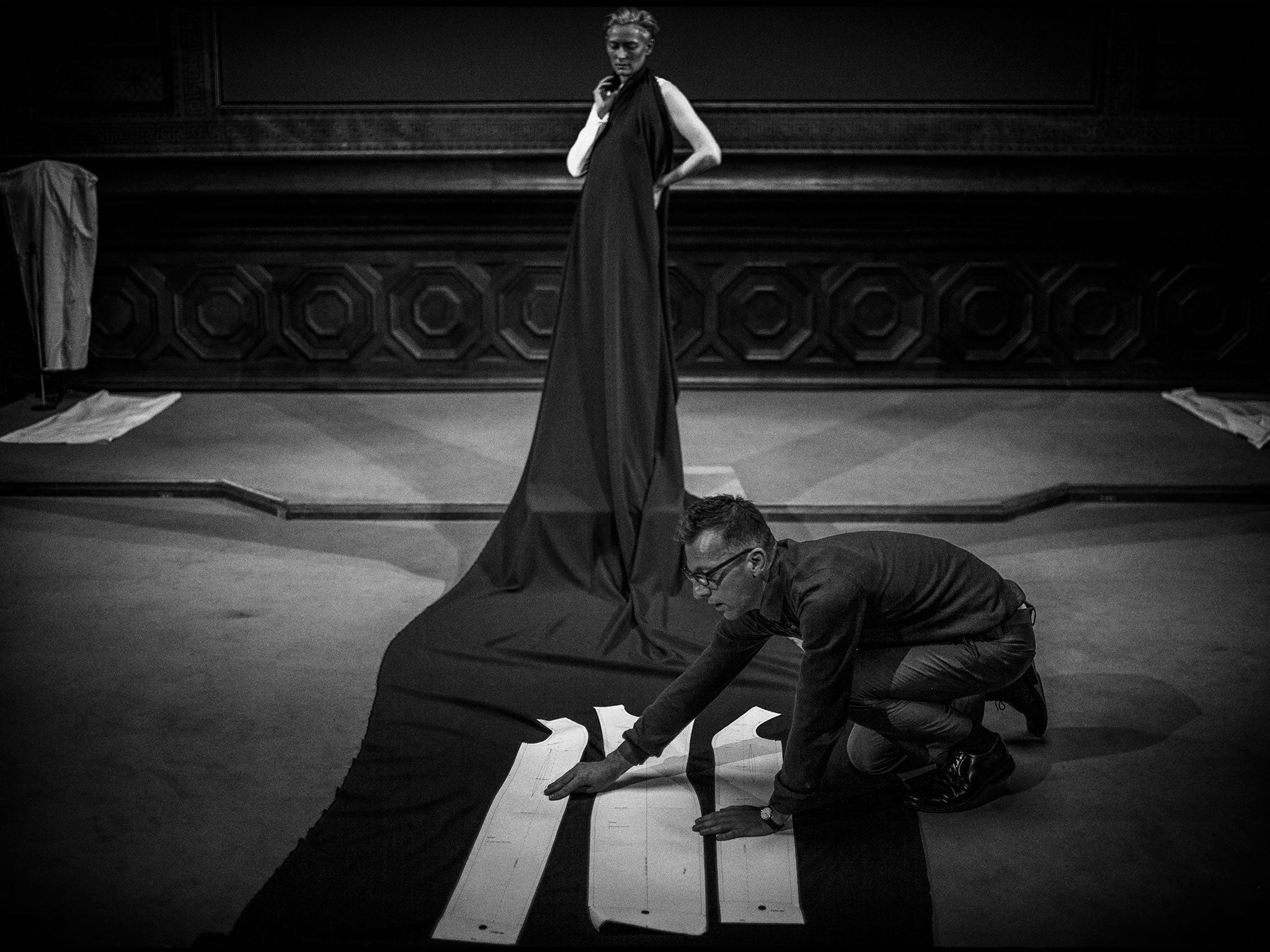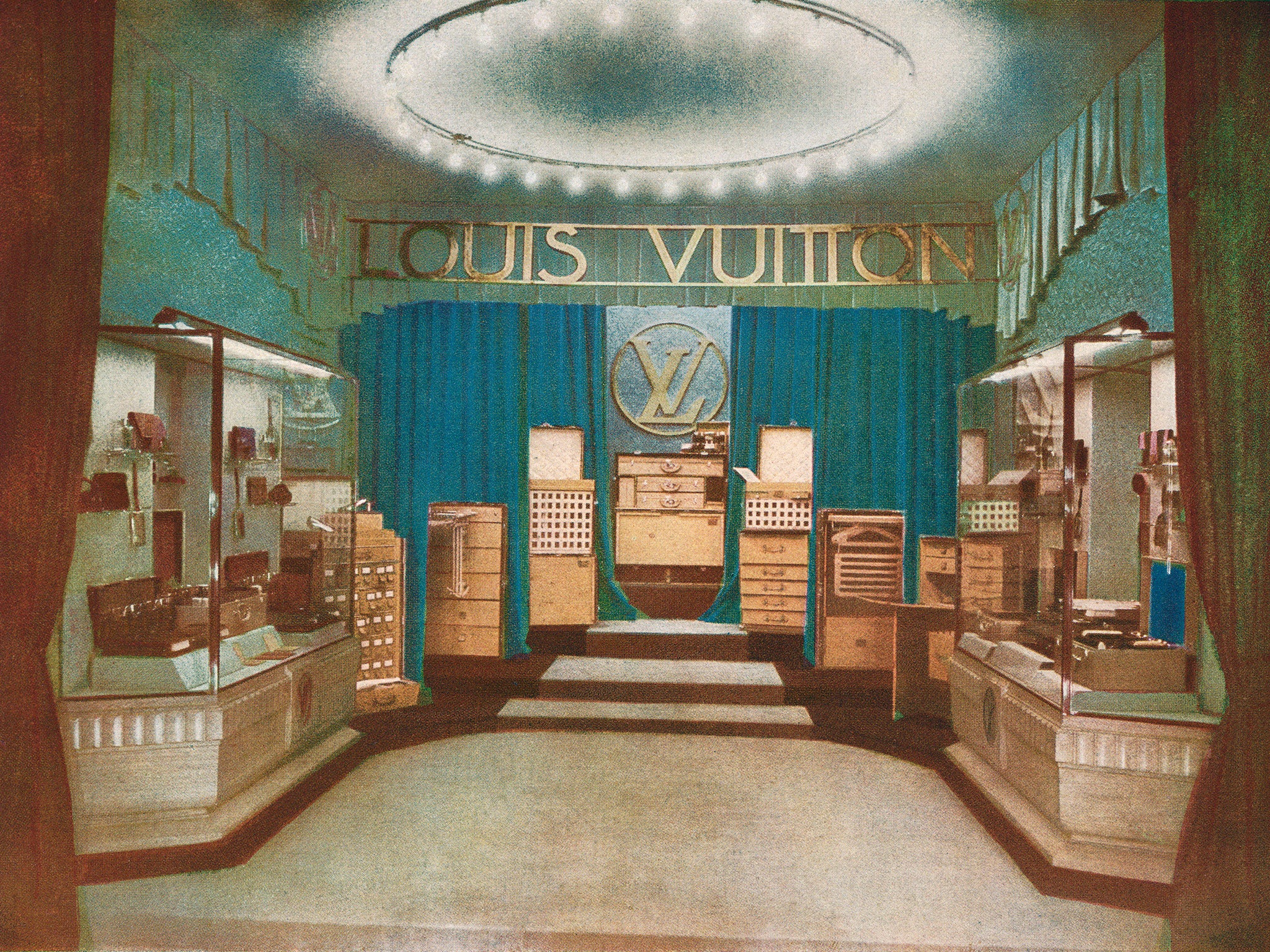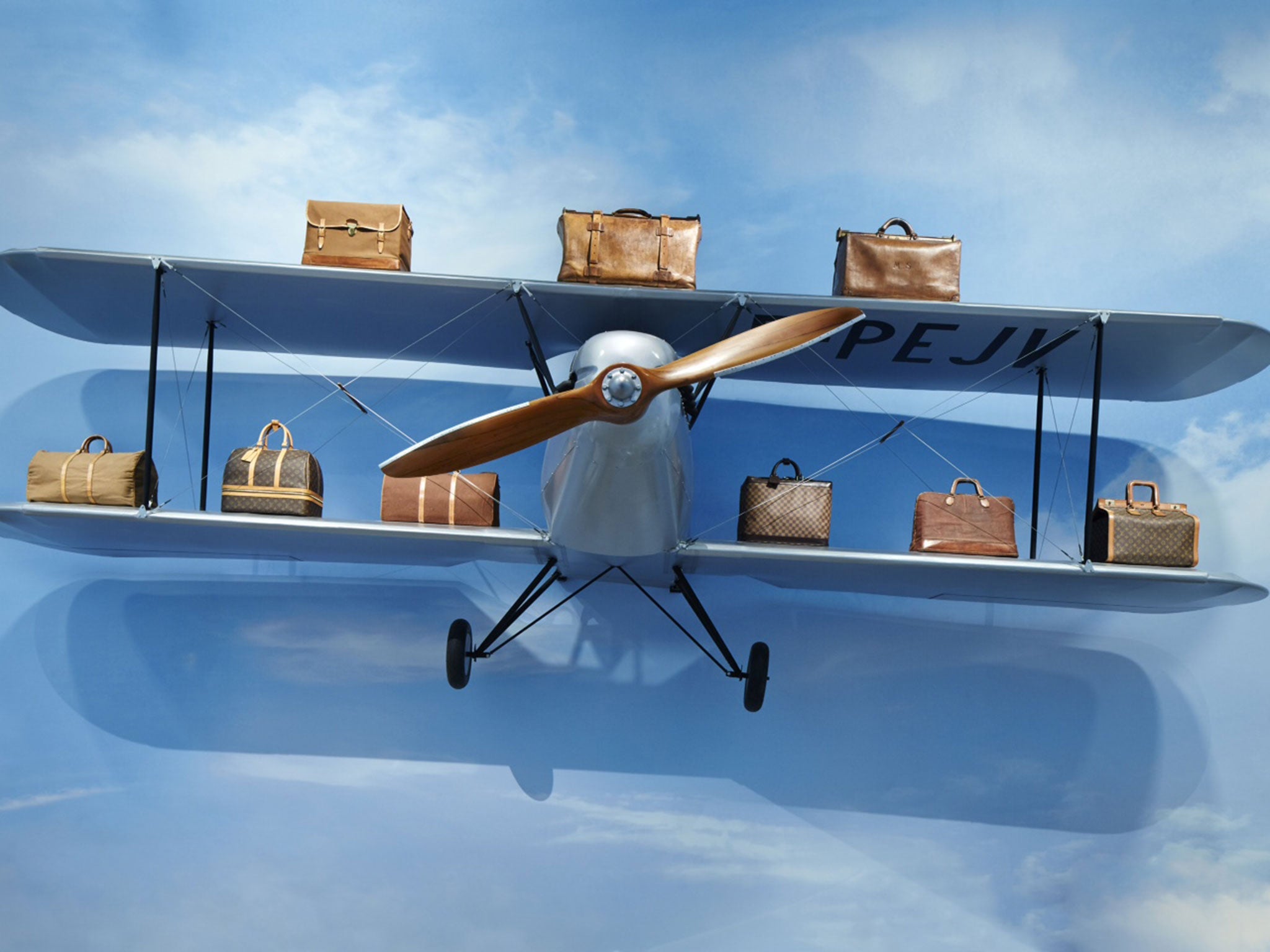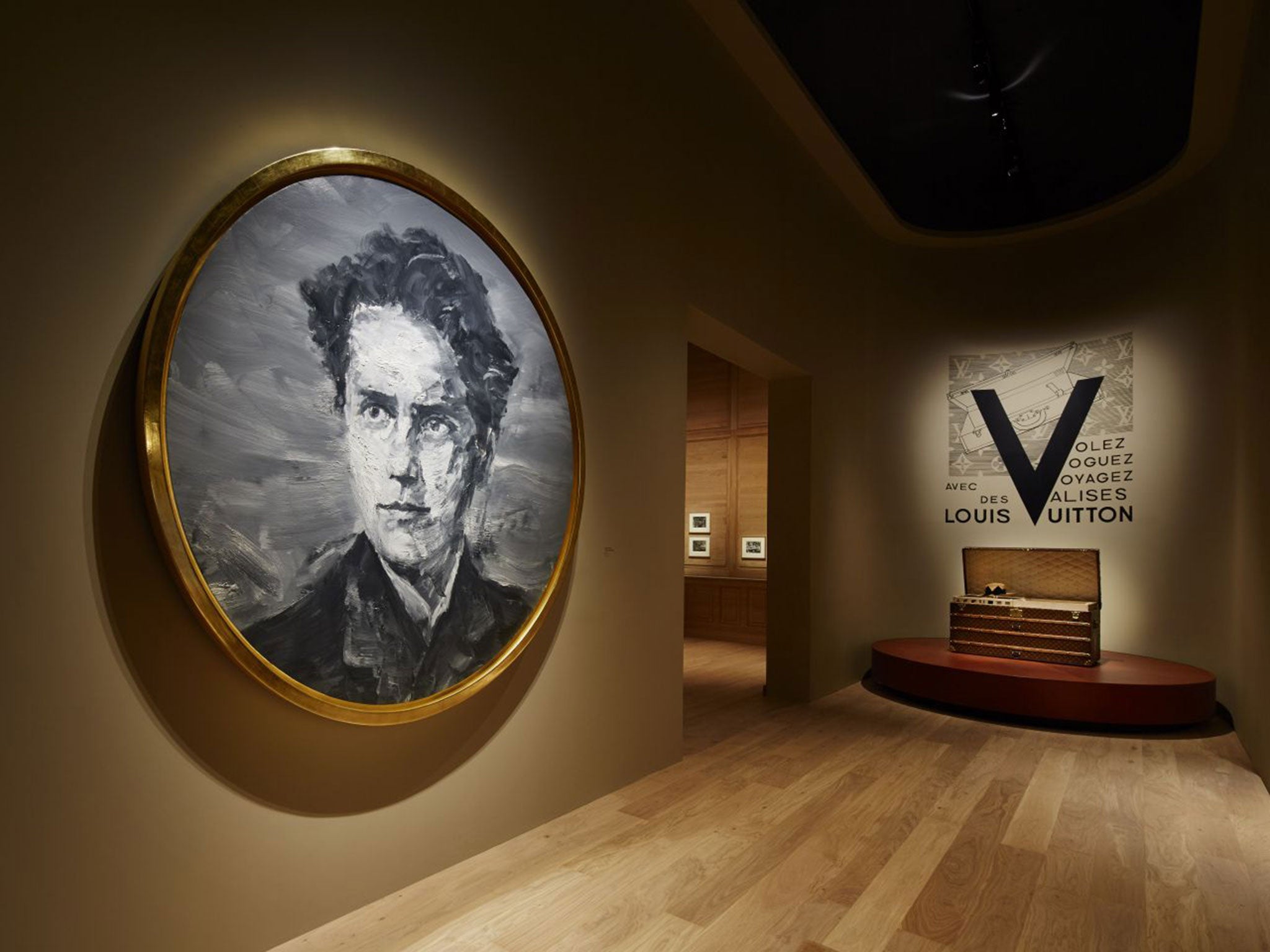How maverick creator Olivier Saillard became fashion’s favourite curator
Bringing costume out of stuffy glass vitrines and into the real world, Olivier Saillard has ripped up the rule book

Your support helps us to tell the story
From reproductive rights to climate change to Big Tech, The Independent is on the ground when the story is developing. Whether it's investigating the financials of Elon Musk's pro-Trump PAC or producing our latest documentary, 'The A Word', which shines a light on the American women fighting for reproductive rights, we know how important it is to parse out the facts from the messaging.
At such a critical moment in US history, we need reporters on the ground. Your donation allows us to keep sending journalists to speak to both sides of the story.
The Independent is trusted by Americans across the entire political spectrum. And unlike many other quality news outlets, we choose not to lock Americans out of our reporting and analysis with paywalls. We believe quality journalism should be available to everyone, paid for by those who can afford it.
Your support makes all the difference.Olivier Saillard isn't precious about clothes. Which is strange given that the 48-year-old Frenchman is the director of the tony Musée Galliera in Paris, a costume curator with more than 20 years' experience. We talk as he is knee-deep in preparations for his latest show, Volez, Voguez, Voyagez, which sounds a bit like the chorus to "Lady Marmalade" but actually means "Fly, Sail, Travel". It's an exhibition of the work of Louis Vuitton – the trunk-maker himself, who founded his brand based on the travelling need of the 19th-century mondaine (hence the title) in 1854. It also takes in his son and grandson and their subsequent 20th- and 21st-century successors. It opens today at the Grand Palais in Paris.
Saillard is excited about it. He seems like a man who gets excited about everything he does – and he does a lot. He is one of the foremost and most innovative curators of fashion work- ing today. Example: the start of his tenure at the Musée Galliera coincided with a four-year renovation – usually an opportunity for museum curators to rest on their laurels. Not Saillard, who used the opportunity to stage shows of the Galleria collection in other institutions, most notably installing garments by the couturier Madame Grès in a museum more usually dedicated to the sculptor Antoine Bourdelle. Grès' classical gowns contrasted perfectly with Bourdelle's classical sculptures, and the overall effect was of extraordinary refinement, of aesthetics working in tandem rather than an "invasion" of fashion. That's fundamentally Saillard's approach – the author and design critic Alice Rawsthorn insightfully summarised it as "new ways to show old clothes".

Saillard is obsessed with the new, with thinking outside the box. Quite literally, in many cases: at the Grand Palais, Vuitton trunks are thrown open with costume laid inside, like relics of long-gone relatives rediscovered. "When you open a trunk, it's always disappointing to see an empty box," states Saillard with a grin. I also remember a 2005 exhibition of the work of Yohji Yamamoto at Saillard's former ward, the Musée des Arts Décoratifs, where garments were physically placed outside of museum vitrines. Saillard wanted his audience to be able to touch the clothes. Who thinks like that? Not museum curators – at least, not most. "I think it's wrong – we don't need vitrines," states Saillard. "We need for the 18th and 19th century, but for 20th century… it's more free. It's important."
The most extreme example of Saillard's freedom is a series of exhibitions he curated with the actress Tilda Swinton. Exhibition is a relative term – think of an exhibition not only without vitrines, but without walls, as each was staged as a performance piece on the body of Swinton. One, Eternity Dress, featured the creation of a single garment on Swinton's body by Saillard, to exhibit the process behind making garments; in another, Vestiaire Obligatoire, garments were removed from audience members and given to Swinton to caress and wear.

The most remarkable, however, was possibly the first. Titled The Impossible Wardrobe and staged in 2012, it saw a white-clad Swinton caress, wear and "model" garments, interacting with centuries of fashion from the extraordinary Galliera archives – clothes once owned, and worn, by Marie Antoinette or Napoleon, or created by Schiaparelli, Balmain and Dior. She was, effectively, wearing the unwearable, and breaking the cardinal rule of museum curating: look, but don't touch. The cumulative effect was extraordinary: staged in October 2012 Paris Fashion Week, some critics in attendance dubbed it the show of the season. The three "exhibitions" spawned a glossy coffee-table book with Rizzoli, Impossible Wardrobes, published earlier this year.
"I am very interested by the challenge to introduce life into this collection," states Saillard. "What we made with Tilda, for The Impossible Wardrobe, was a kind of little exhibition. It was an exhibition that takes place during 40 minutes each night. But it was an exhibition in the arms of Tilda; it was not in a museum, but she was a museum. For me, probably, it is the most important thing I did in my life."
There's no touching at Volez, Voguez, Voyagez – though, I suppose, you could touch the contemporary reincarnations of Vuitton's greatest hits at any boutique. That dialogue between the present and the past is important – unavoidable, even. Vuitton exhibited at the Grand Palais for the 1900 Universal Exhibition, and returned a few times after – historical moments now resurrected. "Bernard Arnault said to me, 'You have to do an exhibition as you would do for a museum.' He never went into the project asking me to show 100 bags from the last season," says Saillard. "It was evident for him to show more the historical side of Louis Vuitton than the contemporary part. We introduced contemporary work into the exhibition, but through the historical pieces."

I ask Saillard if it's important for the costume in museums to relate to the fashion of today. "I'm not sure," says he, unexpectedly. It's unexpected because he makes a compelling case for a link – Saillard studied archaeology and contemporary art at universities in Besançon and Montpellier, a fascinating contrast given how his work makes relics of the past feel modern.
Saillard quantifies his uncertainty. "I think it's important for a fashion museum to be very close to fashion designers. Which doesn't mean to always present contemporary fashion." I can't help but feel that Saillard's work reflects contemporary fashion's voracious guzzling and regurgitation of historical forms in the desperate search for something new. Watching Swinton clutch an 18th-century frock coat against her torso, you were struck by its poetic similarity to many a pietà. But you also sort of wondered if they had it in your size. "I can imagine especially today that the costume from the past seems more contemporary than fashion today," he comments, cleverly. Olivier Saillard is very clever.
Volez, Voguez, Voyagez is at the Grand Palais until 21 February 2016
Join our commenting forum
Join thought-provoking conversations, follow other Independent readers and see their replies
Comments